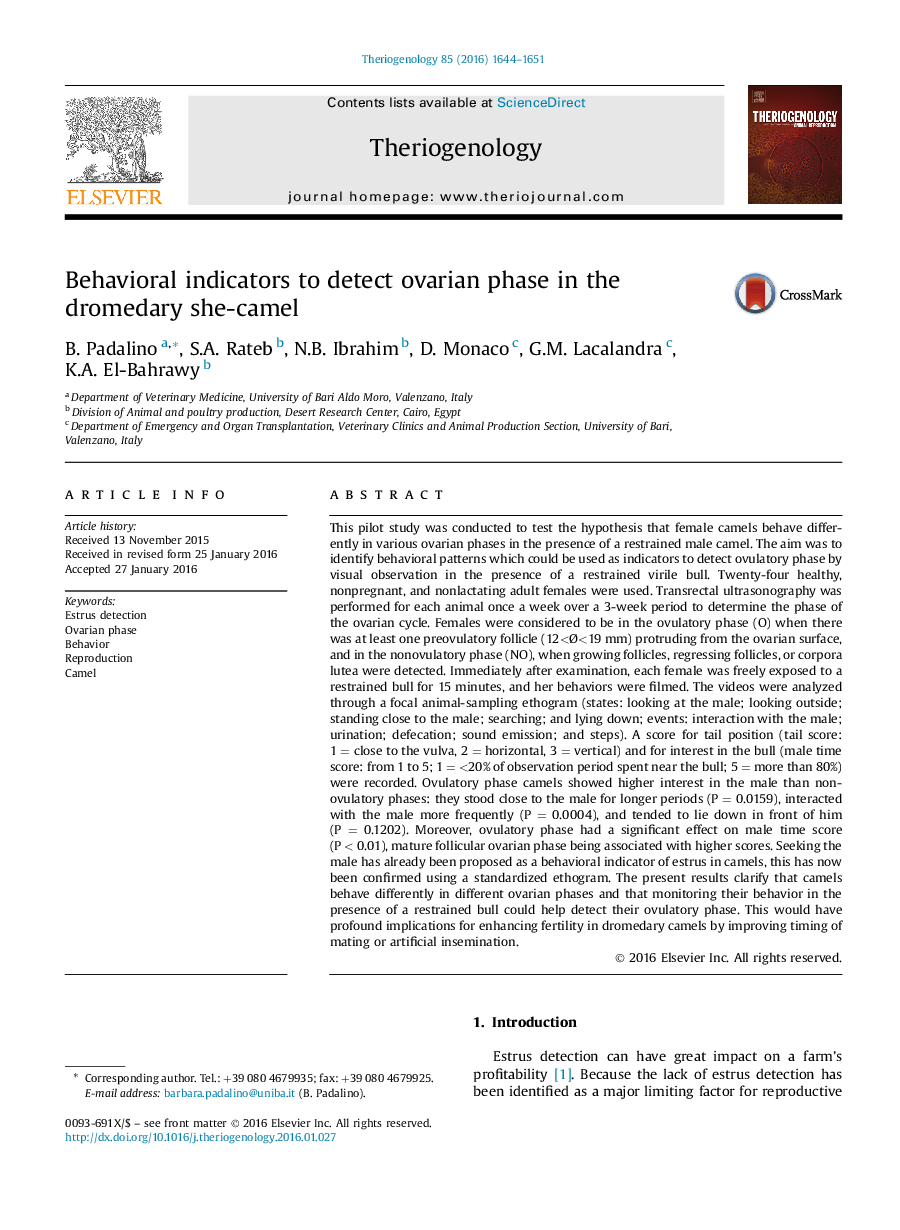| کد مقاله | کد نشریه | سال انتشار | مقاله انگلیسی | نسخه تمام متن |
|---|---|---|---|---|
| 2095222 | 1082083 | 2016 | 8 صفحه PDF | دانلود رایگان |
This pilot study was conducted to test the hypothesis that female camels behave differently in various ovarian phases in the presence of a restrained male camel. The aim was to identify behavioral patterns which could be used as indicators to detect ovulatory phase by visual observation in the presence of a restrained virile bull. Twenty-four healthy, nonpregnant, and nonlactating adult females were used. Transrectal ultrasonography was performed for each animal once a week over a 3-week period to determine the phase of the ovarian cycle. Females were considered to be in the ovulatory phase (O) when there was at least one preovulatory follicle (12<Ø<19 mm) protruding from the ovarian surface, and in the nonovulatory phase (NO), when growing follicles, regressing follicles, or corpora lutea were detected. Immediately after examination, each female was freely exposed to a restrained bull for 15 minutes, and her behaviors were filmed. The videos were analyzed through a focal animal-sampling ethogram (states: looking at the male; looking outside; standing close to the male; searching; and lying down; events: interaction with the male; urination; defecation; sound emission; and steps). A score for tail position (tail score: 1 = close to the vulva, 2 = horizontal, 3 = vertical) and for interest in the bull (male time score: from 1 to 5; 1 = <20% of observation period spent near the bull; 5 = more than 80%) were recorded. Ovulatory phase camels showed higher interest in the male than nonovulatory phases: they stood close to the male for longer periods (P = 0.0159), interacted with the male more frequently (P = 0.0004), and tended to lie down in front of him (P = 0.1202). Moreover, ovulatory phase had a significant effect on male time score (P < 0.01), mature follicular ovarian phase being associated with higher scores. Seeking the male has already been proposed as a behavioral indicator of estrus in camels, this has now been confirmed using a standardized ethogram. The present results clarify that camels behave differently in different ovarian phases and that monitoring their behavior in the presence of a restrained bull could help detect their ovulatory phase. This would have profound implications for enhancing fertility in dromedary camels by improving timing of mating or artificial insemination.
Journal: Theriogenology - Volume 85, Issue 9, June 2016, Pages 1644–1651
